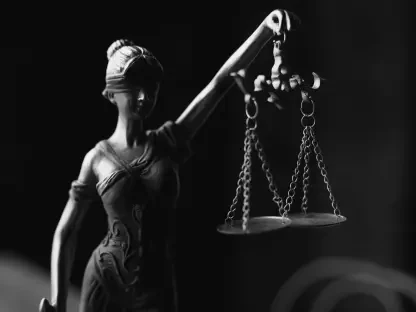I’m thrilled to sit down with Sofia Khaira, a renowned specialist in diversity, equity, and inclusion, who has dedicated her career to transforming workplace cultures and enhancing talent management. With her deep expertise in human resources, Sofia offers invaluable insights into the complex world of workplace surveillance, employee privacy, and the ethical dilemmas that arise from monitoring practices. Today, we’ll explore the balance between security and trust, the legal and moral implications of surveillance, and how emerging technologies and remote work are reshaping these dynamics.
How do you view the use of secret cameras by employers to catch staff stealing, like in the case of an airline facing significant stock losses at Manchester Airport?
I think it’s a tricky situation. On one hand, employers have a legitimate interest in protecting their assets, especially when losses are substantial. If a company is bleeding resources, it’s understandable they’d want to take action. However, using secret cameras without any prior notice or dialogue with employees raises serious ethical concerns. It signals a lack of trust right off the bat, and it risks alienating staff who might feel violated or dehumanized by being watched covertly. There’s also the question of proportionality—was this the only way to address the issue, or just the easiest?
What alternative approaches could employers consider instead of covert surveillance to tackle issues like theft?
There are definitely other paths to explore before jumping to hidden cameras. For starters, fostering an open dialogue with employees about the issue of stock loss can go a long way. If staff feel involved in problem-solving, they’re more likely to take ownership and report suspicious behavior themselves. Employers could also implement better inventory controls or conduct regular audits that don’t involve spying. Training programs that emphasize workplace ethics and the consequences of theft might deter such behavior without resorting to invasive measures. It’s about building a culture of accountability rather than suspicion.
How can employers strike a balance between the need to monitor workplaces and respecting employees’ right to privacy?
It’s all about transparency and proportionality. Employers need to clearly communicate why monitoring is necessary, what exactly will be monitored, and how the data will be used. If employees understand the reasoning—say, for safety or compliance—they’re more likely to accept it. But it has to be reasonable; monitoring should be limited to what’s truly needed. For instance, using CCTV in common areas for security is one thing, but tracking every keystroke or personal conversation is overreach. It’s also crucial to involve staff in these discussions so they don’t feel like decisions are being imposed on them.
What legal pitfalls should employers watch out for when implementing monitoring systems?
There are significant legal risks if monitoring isn’t handled properly. Laws like the Data Protection Act and GDPR in the UK, for example, require that any data collection be necessary, justified, and transparent. Employers must inform staff about monitoring practices and ensure data is securely stored and not misused. Failing to comply can lead to hefty fines or lawsuits, not to mention reputational damage. There have been cases where covert surveillance led to claims of unfair dismissal or discrimination, especially if it disproportionately targets certain groups or individuals. Employers need to conduct impact assessments and consult legal experts to stay on the right side of the law.
How does workplace surveillance affect employee morale and the overall trust within an organization?
Surveillance can be a real trust-killer if not handled with care. When employees feel like they’re constantly being watched, it creates a culture of suspicion rather than collaboration. I’ve seen situations where excessive monitoring—think constant screen tracking or micromanaging attendance—led to resentment and disengagement. People felt like their employer didn’t trust them to do their jobs, which tanked morale and even productivity, ironically. Over time, this can lead to higher turnover as employees seek workplaces where they feel valued and respected.
With the shift to remote and hybrid work, how should monitoring practices evolve to maintain a positive culture?
Remote work adds a new layer of complexity to monitoring. Employers need to be extra mindful of not creating a ‘chilling effect’ where employees feel uneasy or inhibited. The key is clear communication—remote workers should know exactly what’s being monitored, whether it’s time tracking or project updates, and why it’s necessary. I believe monitoring for remote staff should focus more on outcomes rather than micromanaging every action. Regular check-ins and feedback sessions can also help maintain trust without invasive tools. It’s about adapting to the new reality while still respecting personal boundaries.
What are your thoughts on the rise of advanced technologies like AI and biometric tracking in workplace surveillance?
These technologies are a double-edged sword. They can make monitoring more efficient—think AI analyzing patterns to flag potential issues—but they also risk becoming incredibly intrusive. Tools like emotional state monitoring or facial recognition often operate without employees’ full consent or understanding, which is problematic. There’s also the issue of bias; research shows that certain groups, like Black employees, may be disproportionately affected by flawed algorithms in surveillance tech. Employers must rigorously test these tools for fairness and involve diverse perspectives in their deployment to avoid discriminatory outcomes.
What is your forecast for the future of workplace surveillance, especially with potential policy changes on the horizon?
I believe we’re at a turning point. With proposals like Labour’s ‘Make Work Pay’ plan in the UK, which emphasizes consulting workers before introducing surveillance tech, I think we’ll see a push toward more transparency and collaboration. Employers will likely face stricter compliance standards, which is a good thing—it’ll force them to think twice before overstepping. At the same time, as technology advances, the temptation to monitor more will grow, so striking a balance will remain a challenge. My hope is that we move toward cultures of trust and accountability, where surveillance is a last resort, not a default.









